Science Tokyo celebrates launch of Institute of Integrated Research with kickoff symposium “New possibilities through the integration of knowledge”
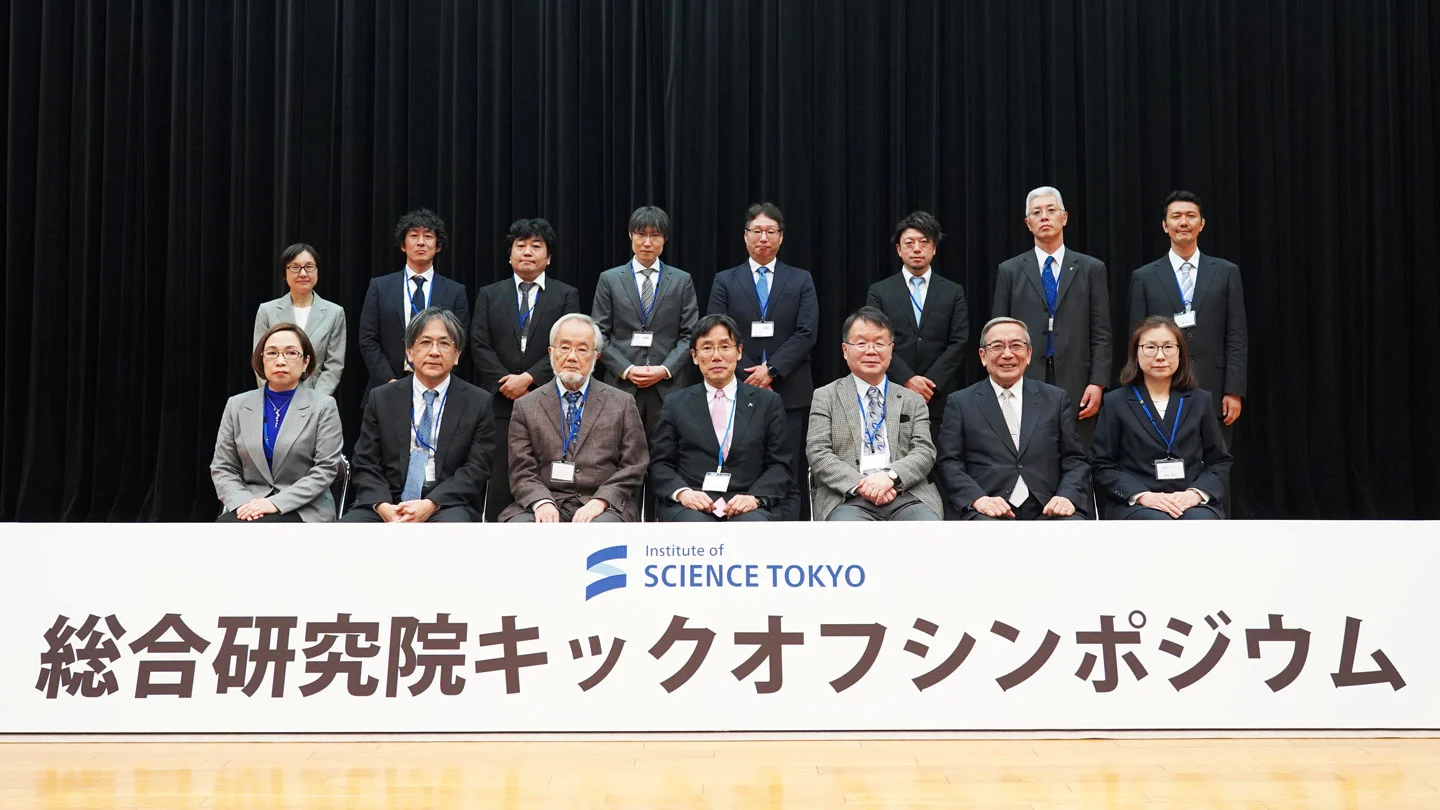
Institute of Science Tokyo held its founding event — the Institute of Integrated Research kickoff symposium “New possibilities through the integration of knowledge” — on April 25 at Akio Suzuki Memorial Hall on Yushima Campus. The Institute of Integrated Research (IIR) is the largest institute within Science Tokyo, dedicated to advancing innovative science and technology by fostering research driven by the interests of individual researchers and integrating insights from diverse disciplines. Its mission is to create new research fields and produce outcomes that support the development of future industrial and medical foundations. This symposium commemorated the launch of the IIR, which was founded in October 2024 in conjunction with the founding of Science Tokyo, as a core pillar of its new research initiatives. The symposium featured presentations introducing the mission and strategic direction of the IIR, as well as lectures highlighting case studies of cutting-edge interdisciplinary research in fundamental science.
The symposium brought together over 660 participants in a hybrid format, both on-site and online, including students, faculty and staff, and alumni of Science Tokyo, as well as individuals from other universities, research institutions, companies, and government officials.
Part 1
Distinguished guests gave messages of congratulations and encouragement to commemorate the launch of the IIR. In addition, special lectures were delivered by Honorary Professor Hideo Hosono and Honorary Professor Yoshinori Ohsumi.
Opening address
Hiroshi Nishina, Director General, Institute of Integrated Research
Nishina outlined the relationships and distinct roles of the three institutes at Science Tokyo — the Institute of Integrated Research, the Institute of Future Science, and the Institute of New Industry Incubation. Regarding the positioning of the IIR at Science Tokyo, he stated that the IIR will serve as a foundation for Science Tokyo’s research capabilities by driving excellent fundamental research, fostering collaboration among researchers, and promoting development of new disciplines.
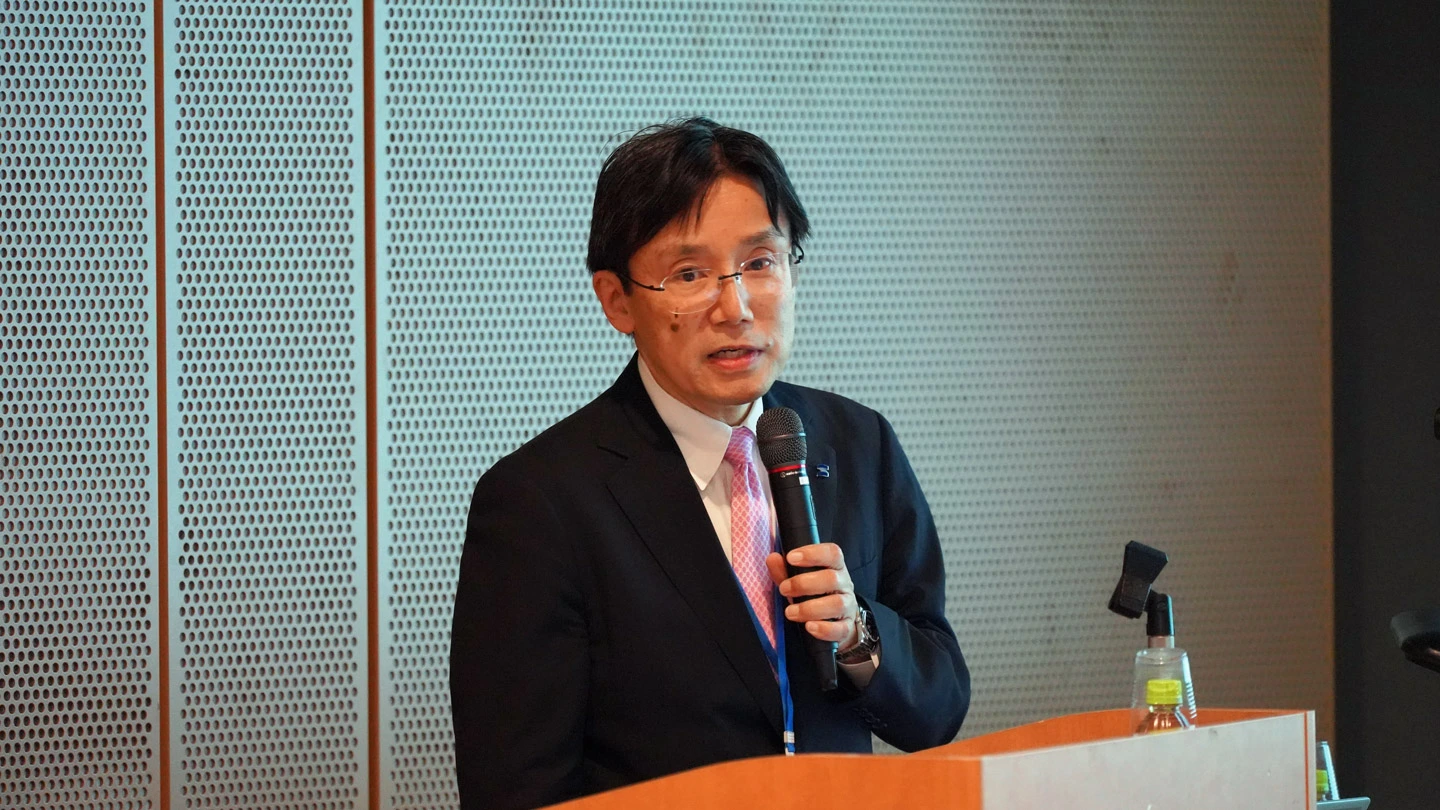
Message from President and CAO
Yujiro Tanaka, Science Tokyo president and chief academic officer (CAO)
Tanaka expressed his hope that the IIR will take the lead in research at Science Tokyo, serving as a driving engine behind it. He further remarked that some universities around the world have achieved great results through the integration of science and engineering fields with medical and dental sciences, and voiced his expectation that Science Tokyo will also focus on interdisciplinary research and that the IIR will demonstrate its strength.
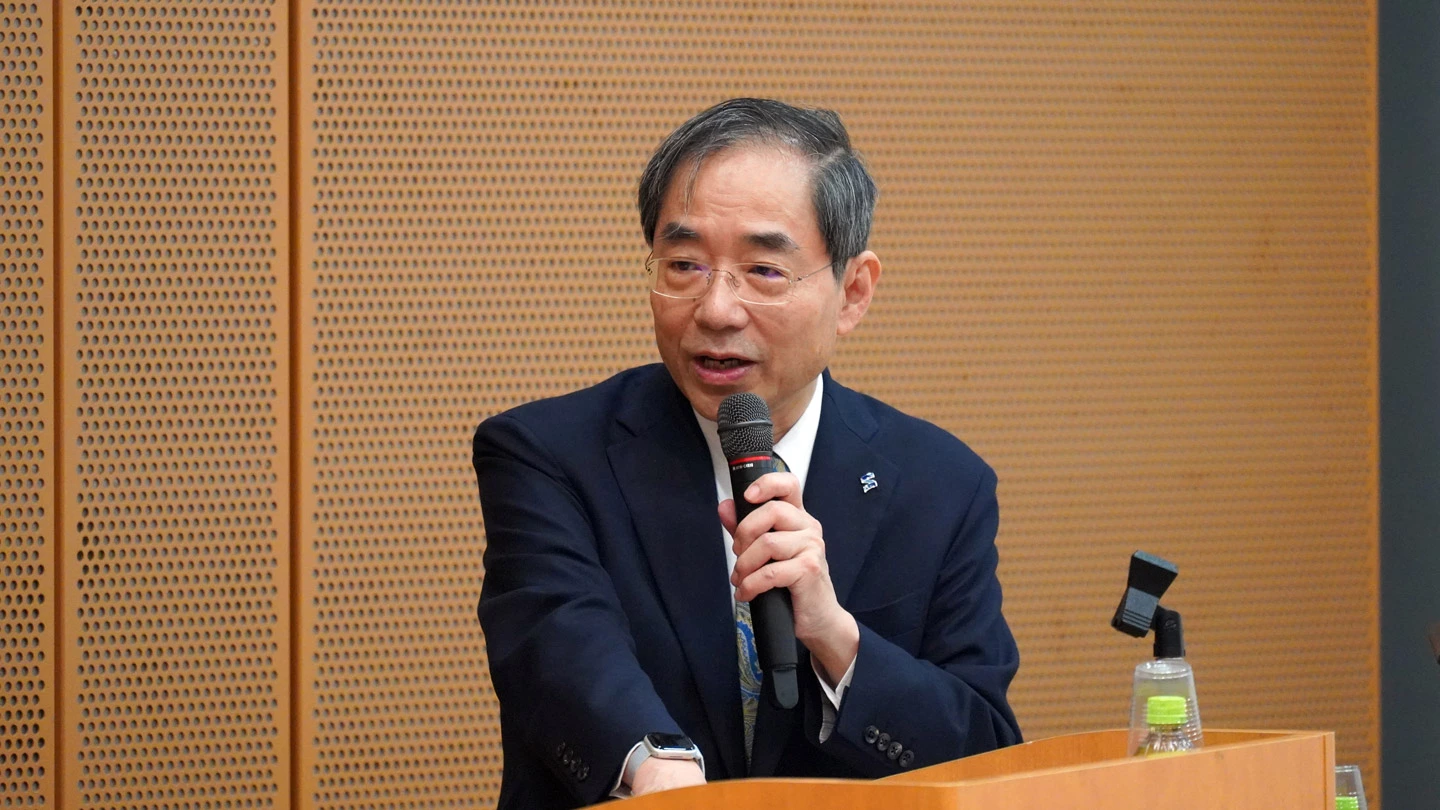
Guest addresses
Shigekazu Matsuura, Deputy Director-General, Research Promotion Bureau and Higher Education Policy Coordination, Ministry of Education, Culture, Sports, Science and Technology (MEXT)
Matsuura expressed his hope that the IIR will generate research outcomes that help solve various societal challenges — such as energy, climate change, the declining birthrate and aging population, and infectious diseases — by integrating insights from diverse disciplines to develop new technologies and create knowledge through the organic collaboration of researchers from diverse backgrounds. Furthermore, he noted his anticipation that Science Tokyo will serve as a hub for research capabilities in Japan.
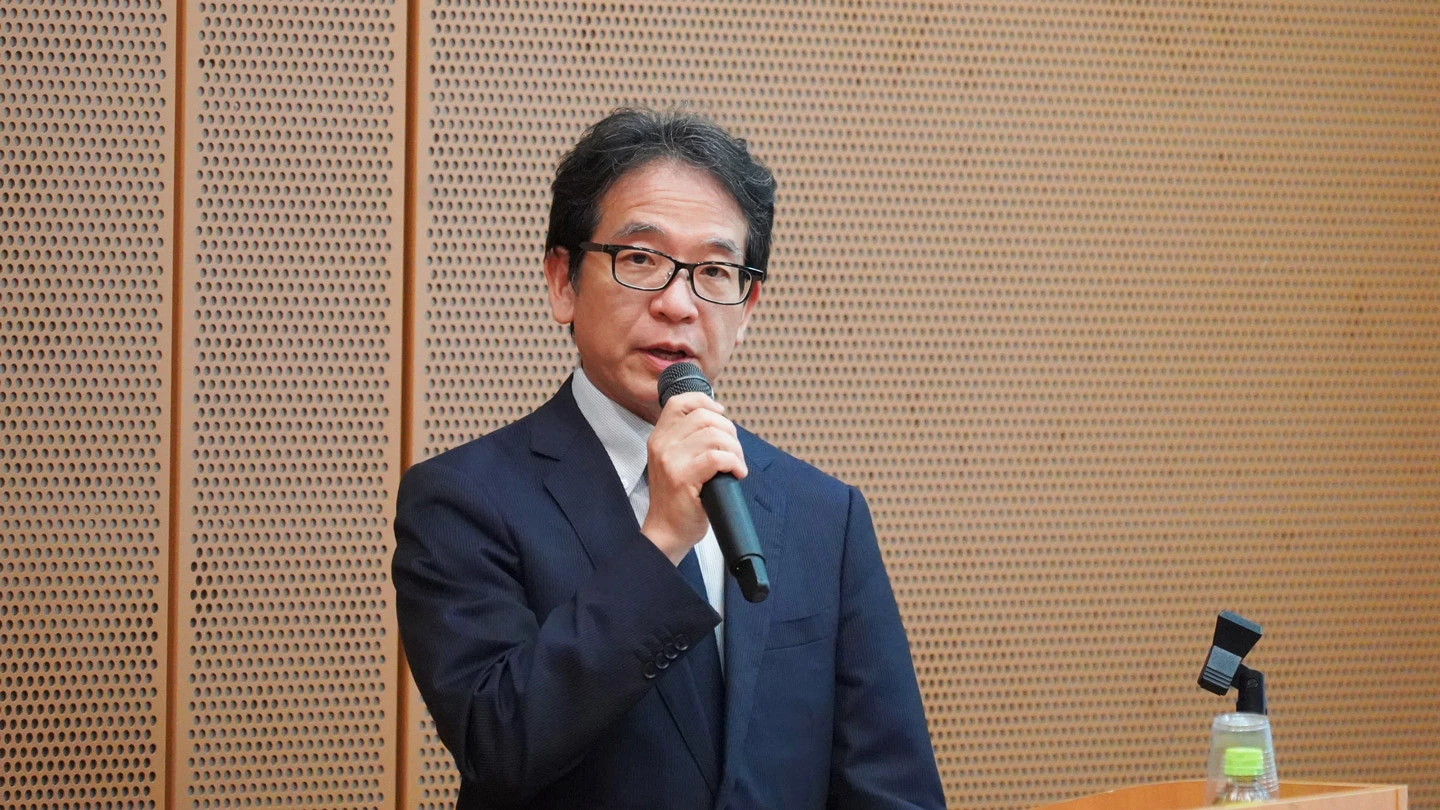
Yoshinao Mishima, former president, Japan Agency for Medical Research and Development (AMED) / Professor Emeritus and former president, Tokyo Institute of Technology
“The most important factor in accelerating the process from research outcomes to drug production and implementation is not shortening the process itself, but rather producing a substantial amount of detailed, high-quality basic research and crafting a pathway leading up to drug development through collaboration with a diverse range of talent, including people from pharmaceutical companies and intellectual property experts,” said Mishima, sharing the knowledge he gained at AMED. He emphasized the significance of efforts by the IIR in basic research and the symposium’s theme of “integration of knowledge.”
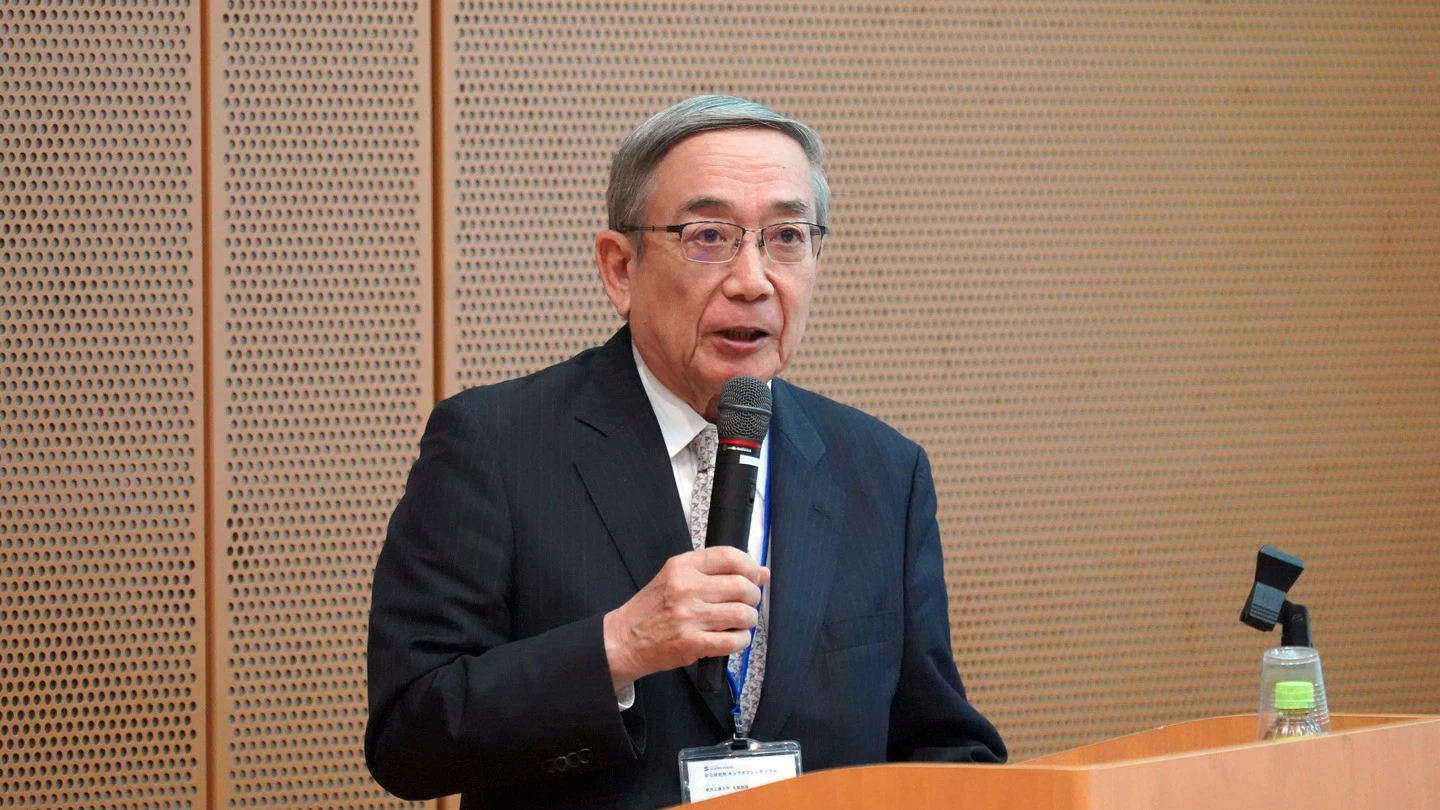
Asako Sugimoto, Executive Vice President for Research, Tohoku University
Sugimoto expressed her hope that Tohoku University and Science Tokyo will further deepen their collaborative efforts in research fields and other areas and that the two organizations will continue to work together as valuable partners in university reform.
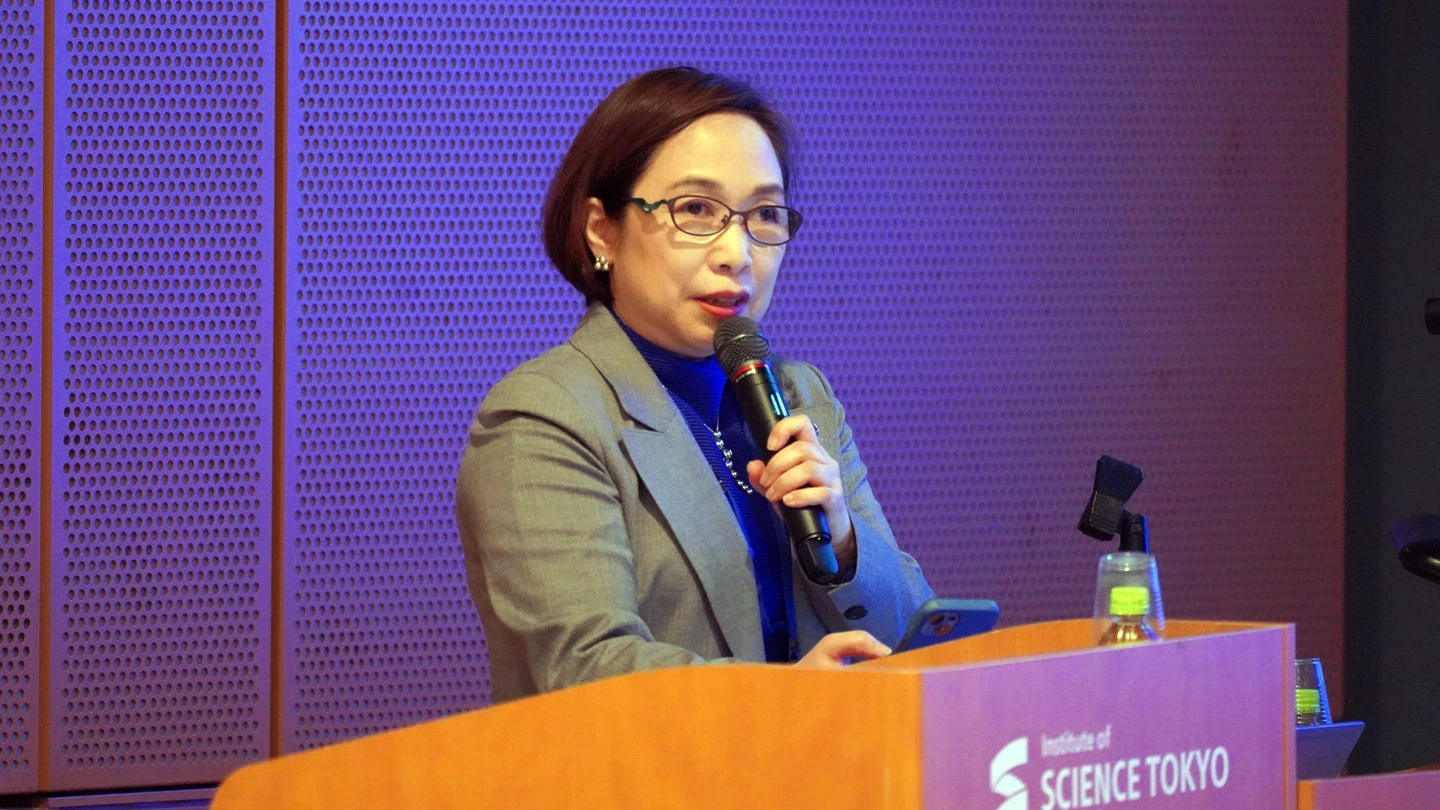
Hiraku Nakajima, Professor, Kavli Institute for the Physics and Mathematics of the Universe, The University of Tokyo / President, International Mathematical Union
Drawing on his experience at the International Mathematical Union, Nakajima pointed out that it is important for researchers to be active in the community, both for their own research activities and for the development of young researchers. He also discussed the importance of promoting Japanese research outcomes to the world.
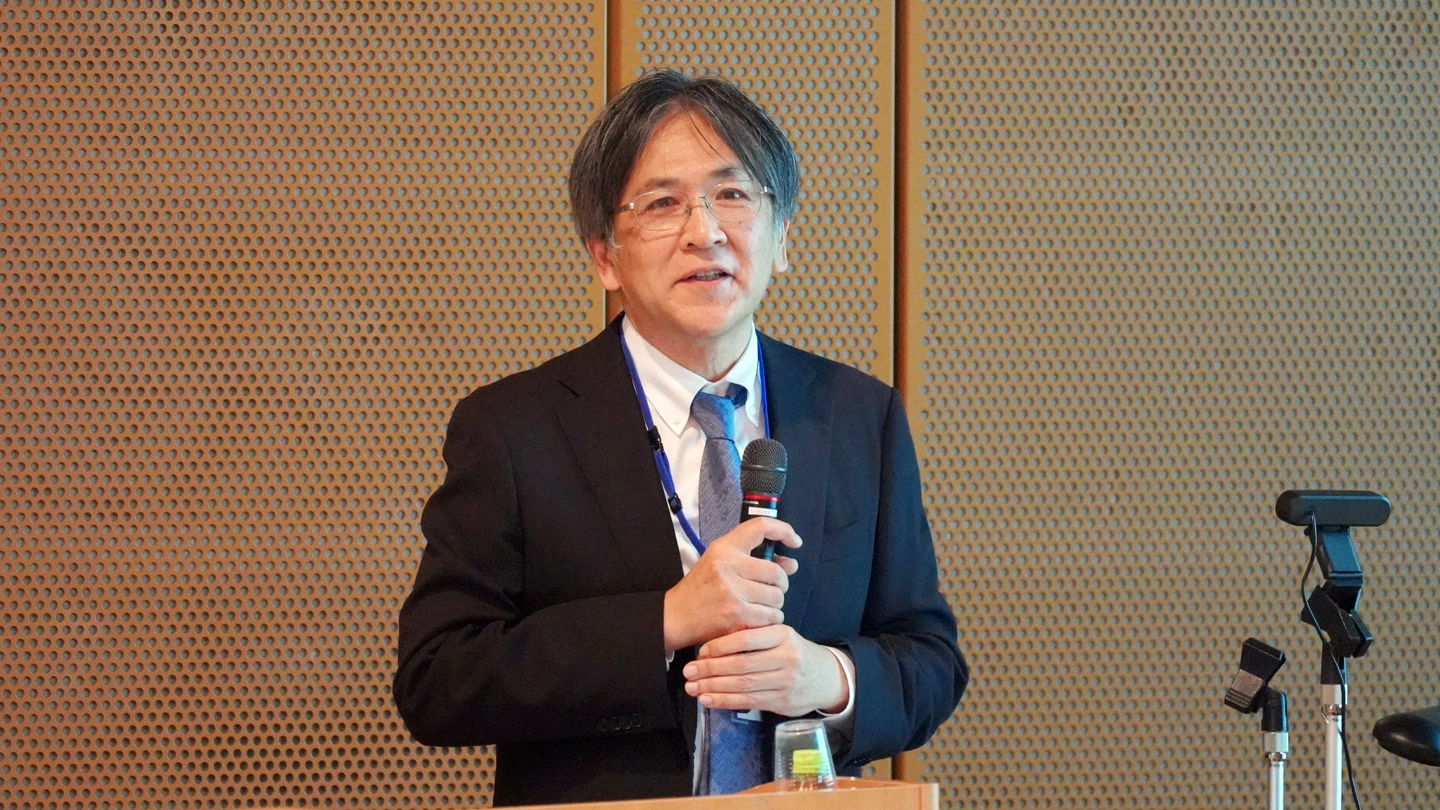
Special lecture: Frontiers lie at the edge: Insights from research on new substances and materials
Hideo Hosono, Honorary Professor / Institute Professor, MDX Research Center for Element Strategy, Science Tokyo
Hosono reflected on over 30 years of materials research at the Institute, including the invention of IGZO and its practical applications. “When I began my research 30 years ago, I could never have imagined it would develop into the field it is today,” he said. He pointed out that a path to new research areas is created by continuing to take on challenges in research that overturn conventional wisdom. Hosono also offered his encouragement, calling on everyone to create a passionate research environment, and, together as Science Tokyo, to generate new academic disciplines and contribute to society.
- IGZO: An oxide containing indium (In), gallium (Ga), and zinc (Zn)
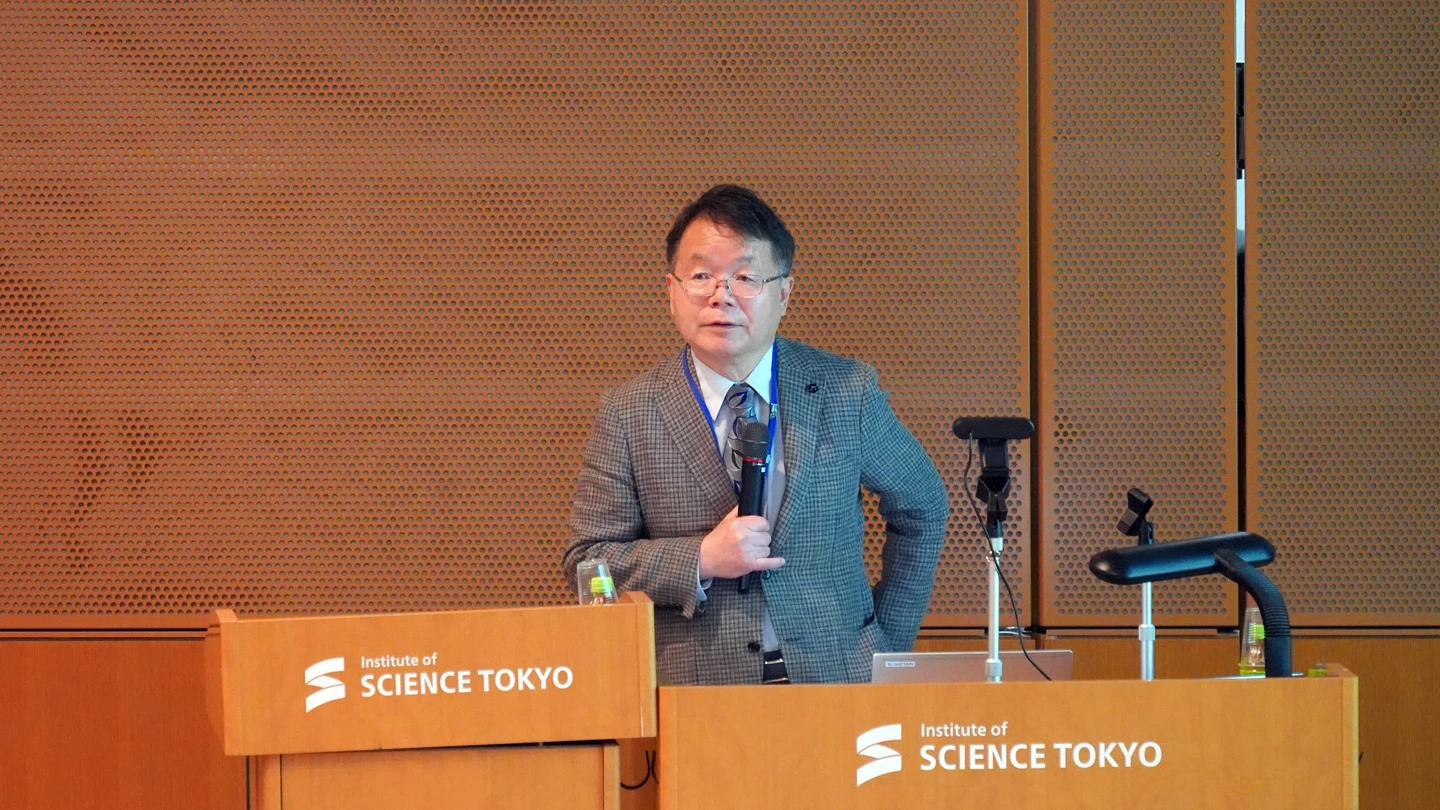
Special lecture: Expectations for the Institute of Integrated Research
Yoshinori Ohsumi, Honorary Professor / Specially Appointed Professor, Cell Biology Center, Science Tokyo
Referencing how the merger of Tokyo Medical and Dental University and Tokyo Institute of Technology was a mutually complementary integration, Ohsumi emphasized that the IIR represents an outstanding opportunity for interdisciplinary research. He also expressed his hope that the IIR will become “the most research-friendly institution in Japan” and highlighted two necessary conditions: 1) the mindset which must be adapted by researchers; namely, fostering mutual understanding among fellow researchers and cultivating interests in different fields, and 2) support for research activities, which includes promoting international exchanges, creating systems that support young researchers in taking on challenges, and establishing an environment where researchers can concentrate on their work.

Part 2
Leading researchers from the IIR provided overviews of each of its laboratories and centers, and then introduced the cutting-edge research they are currently engaged in. The potential for integrating knowledge across a wide range of research fields was shown.
Designing and discovering novel inorganic materials through computational and data science
Fumiyasu Oba, Professor, Materials and Structures Laboratory
Oba introduced his efforts to discover new, previously unreported substances and materials based on predictions made using computational and data science techniques. He also reported cases where experimental verification has been achieved through collaborative research with experimental groups. Additionally, Oba discussed the expectation that analyzing and interpreting various physical properties will inspire new discoveries by material researchers and lead to new data-driven guidelines for material design.
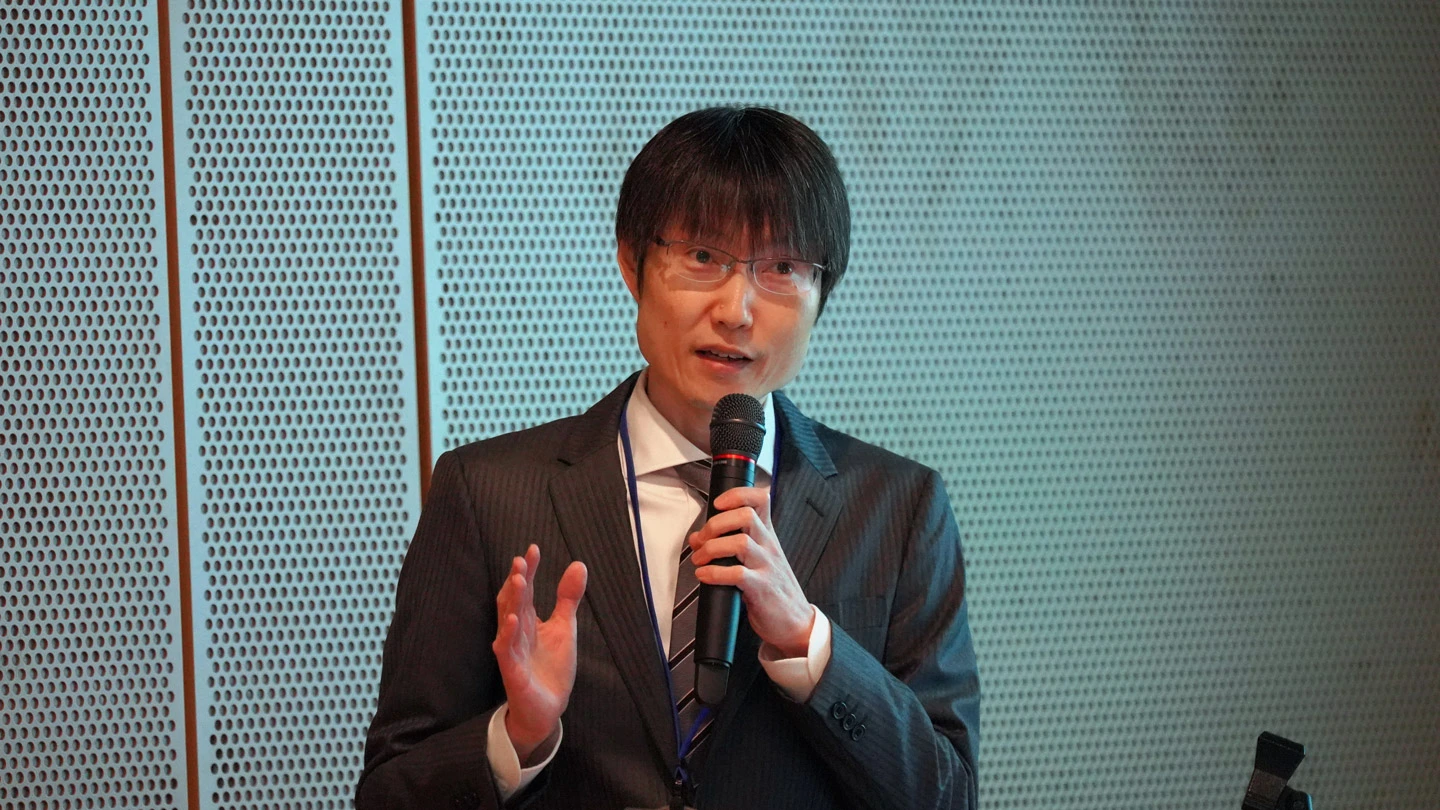
Development of medical smart nanomachines based on design of synthetic polymers
Nobuhiro Nishiyama, Professor, Laboratory for Chemistry and Life Science
Nishiyama introduced the development of technology that enables nanomachines — nanoscale medical devices equipped with various sensors and drug functions — to autonomously patrol the microenvironment inside the body and perform in vivo detection, diagnosis, and treatment. He discussed his current work on a nanomachine that controls aging to extend the healthy lifespan of human beings, and said that he aspires to bring about various innovations through the fusion of medicine and engineering.
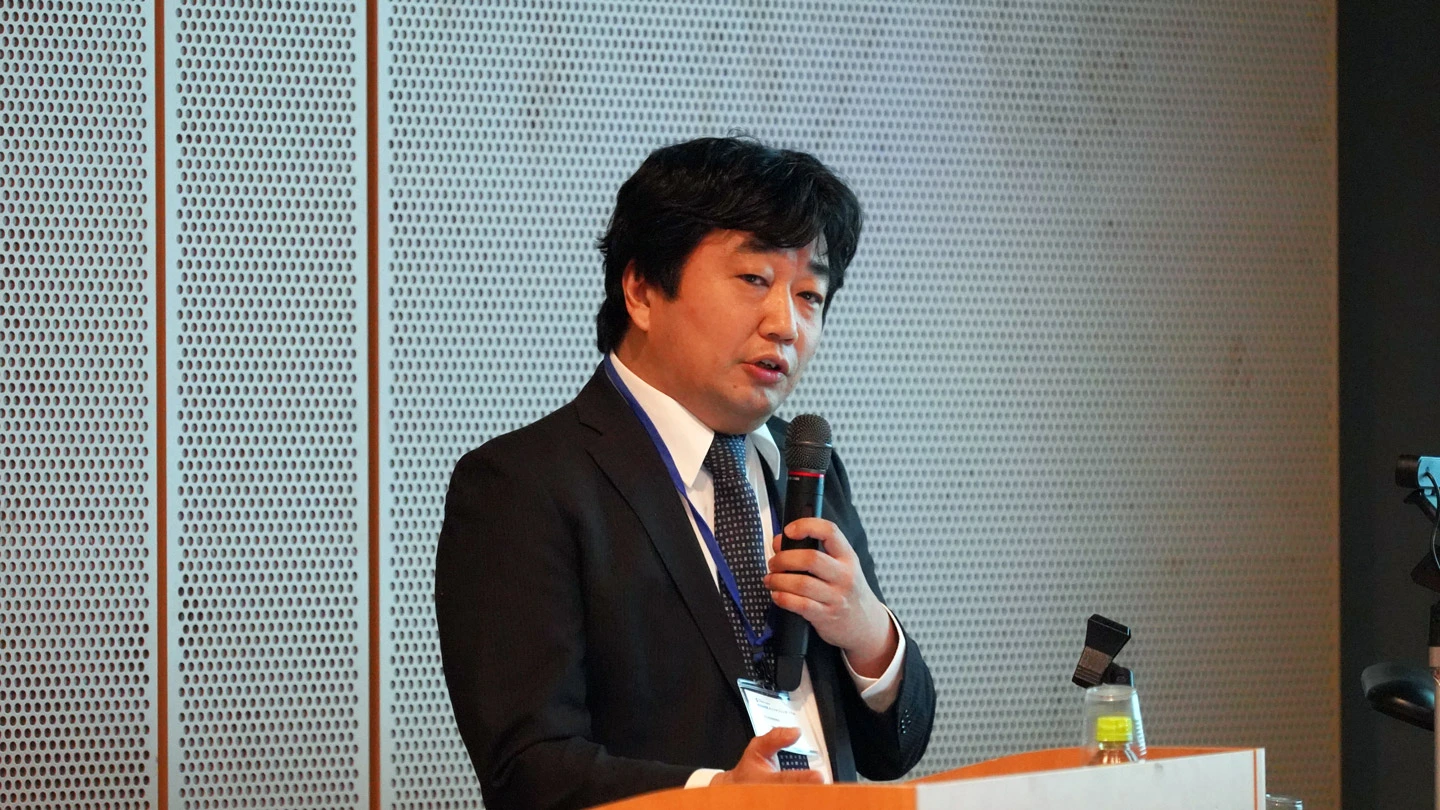
Creation of electronics that contribute to One Health
Hiroyuki Ito, Professor, Laboratory for Future Interdisciplinary Research of Science and Technology
One Health is a concept stating that it is necessary to improve the overall health of not only humans but also animals and the environment. Ito introduced examples of applying technology development that enables sensing the conditions of all things to solve social issues such as medicine and healthcare, environmental and animal welfare, and land conservation, in order to put the One Health concept into practice. He also spoke about his eagerness to work on medical and engineering collaboration and the continuous establishment of startups going forward.
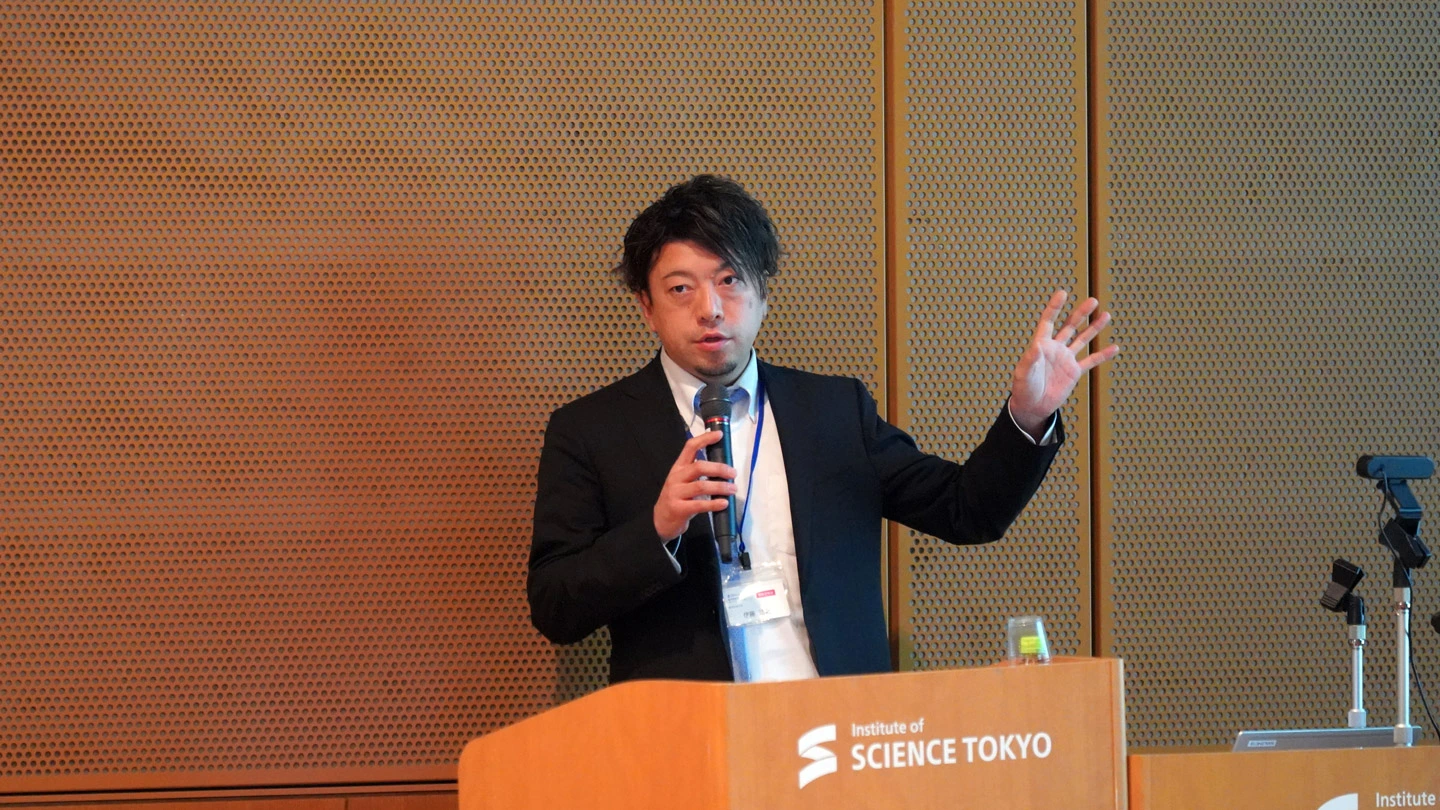
Artificial general intelligence using multi-agent orchestration and zero-UI applications in medicine
Yoshikazu Nakajima, Professor, Laboratory for Biomaterials and Bioengineering
Nakajima introduced his exploration toward the realization of Artificial General Intelligence (AGI) in medicine — where vast amounts of diverse data with various meanings coexist — by implementing a backend AI that interprets the types and meanings of data and algorithms and automatically networks them to enable data sharing. He also introduced the prospect of using image-based Vision AI and voice-based Auditory AI to overcome the UI barriers in medical settings where mice and keyboards cannot be used, thereby enabling a natural connection among people, things, computers, and events (work) without the feeling of using a computer.
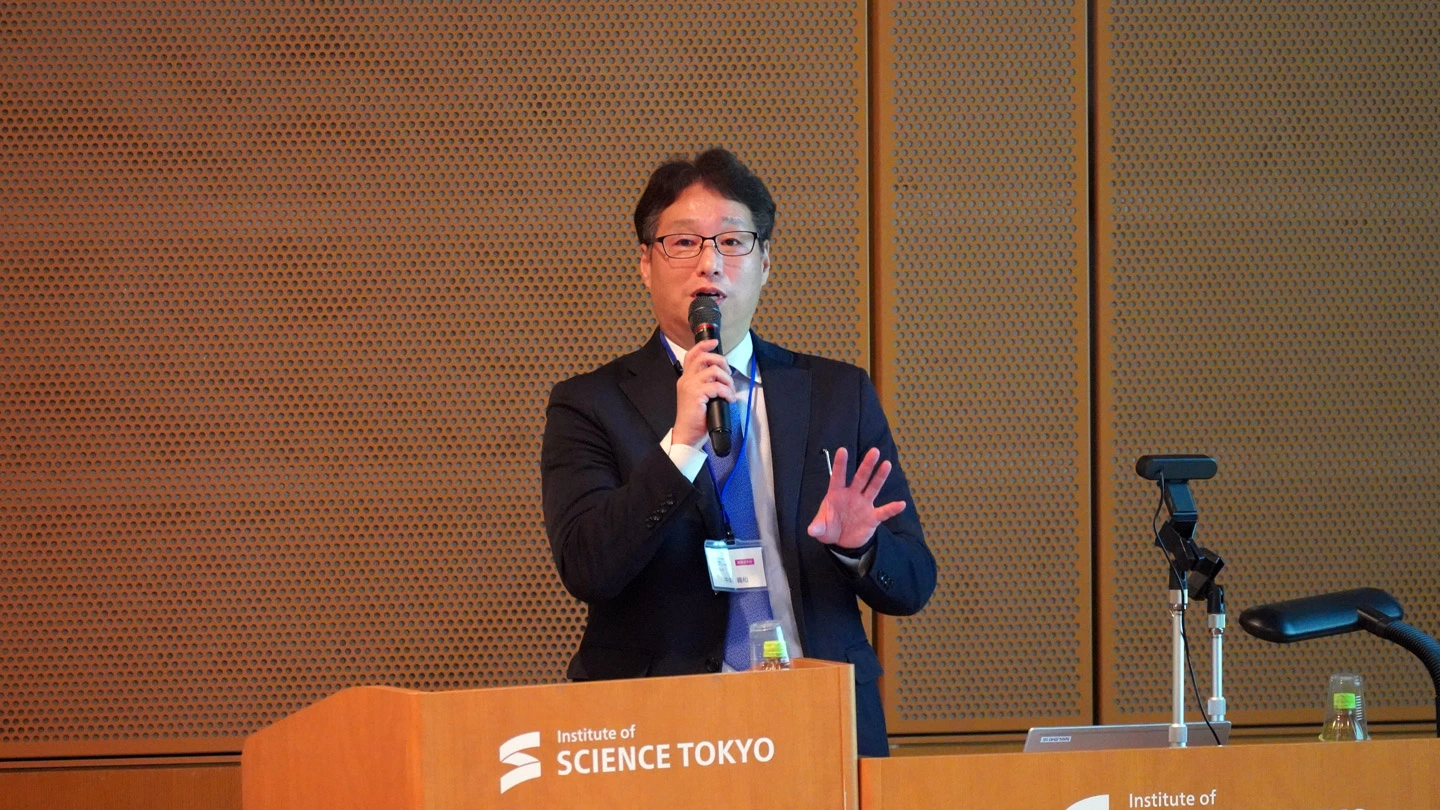
Collaborative research in medical and engineering fields by the Laboratory for Zero-Carbon Energy
Noriyosu Hayashizaki, Professor, Laboratory for Zero-Carbon Energy
Hayashizaki explained that radiation medicine requires the integration of knowledge and technology from medicine, physics, chemistry, engineering, and biology, and highlighted how it is a field where collaboration between medical and dental sciences and science and engineering can be most effectively demonstrated. He presented concepts which aim to put the results and technologies developed by the Laboratory for Zero-Carbon Energy into practical use for society at the Institute of Science Tokyo Hospital. Examples include prediction and modification of radiation sensitivity based on DNA, nuclear medicine quantum imaging technology, development of injectors for heavy ion radiotherapy, and a project to turn nuclear fuel materials into medical resources.

Research on intractable diseases in the age of AI
Teppei Shimamura, Professor, Medical Research Laboratory
Shimamura introduced two examples of applying deep generative models to cell and molecular biology: (1) elucidating and controlling disease mechanisms based on cell dynamics, and (2) designing and optimizing new molecular inhibitors. He also described a future research approach in which AI makes predictions and designs, robots carry out experiments, and humans provide insights. Shimamura outlined the ambitious goals resulting from these efforts — namely, to increase research speed by tenfold and reduce costs by 80%. He pledged to further accelerate the discovery of causes of intractable diseases and the development of new treatments.
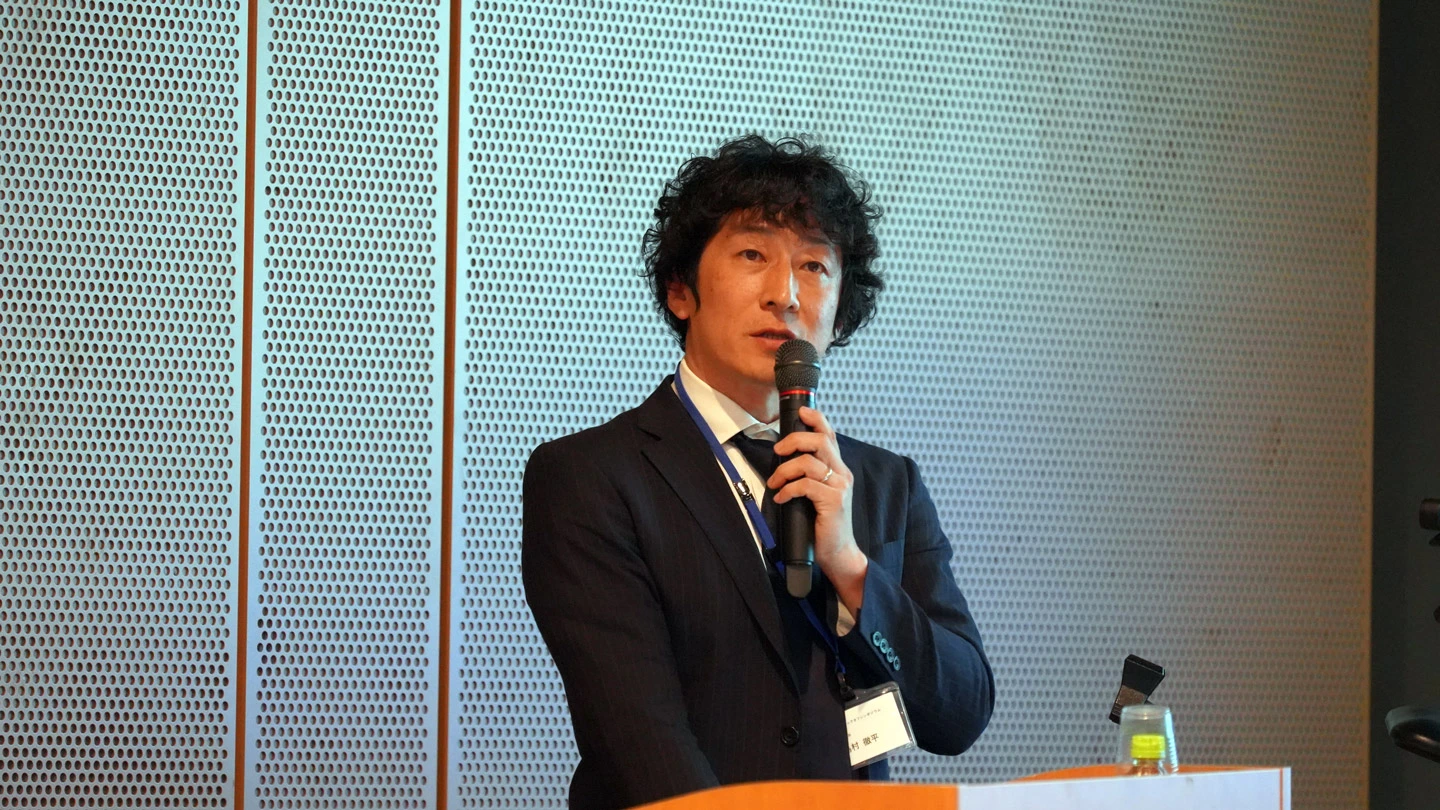
Ultra-Precise Inertial Navigation Without GPS
Mikio Kozuma, Professor, Quantum Navigation Research Center
In order to estimate one’s position without relying on GPS, inertial navigation using accelerometers and gyroscopes is indispensable; however, low accuracy has long been a major challenge. Kozuma explained that he has achieved the world’s highest performance in a portable fiber-optic gyroscope, and by incorporating it into an inertial navigation system, and succeeded in improving its performance by a factor of 100 compared to conventional devices. To surpass the inherent limitations of fiber-optic gyroscopes, he has also been conducting parallel research into quantum gyroscopes. He proposed and experimentally verified a new operational principle that enables functionality even within moving vehicles. In addition, by leveraging ultra-high-precision inertial navigation systems, he is pursuing research that enables real-time and spatially continuous measurements of the Earth's geoid, with the aim of applying these data to improve flood prediction following earthquakes. Looking ahead, he introduced his plans to broaden his research to include stellar inertial navigation, with the goal of developing technologies for a wide range of applications, including ensuring the safety of commercial aircraft and enabling operations on the lunar surface.
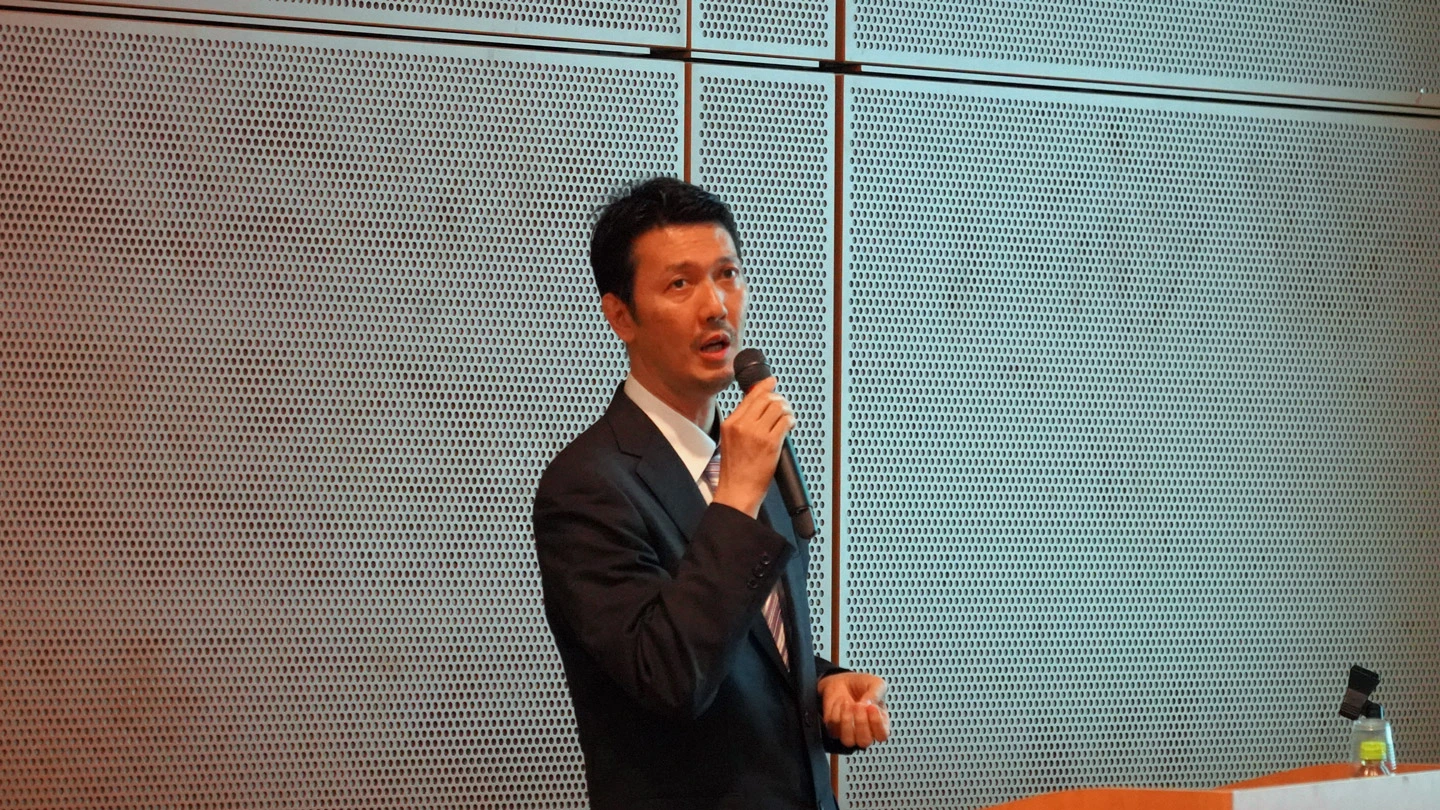
- Geoid: A surface where the gravitational potential energy is equal.
Closing address
Yasuko Yanagida, Associate Director General, Institute of Integrated Research / Professor
While briefly reviewing the content of each lecture, Yanagida pointed out that research at the IIR is conducted at the intersection of various fields, and that the true value of the IIR is found in this cross-disciplinary research. She then concluded the symposium by discussing aspirations for the future: “We look forward to working with all stakeholders to develop the IIR into a knowledge platform capable of global contribution.”
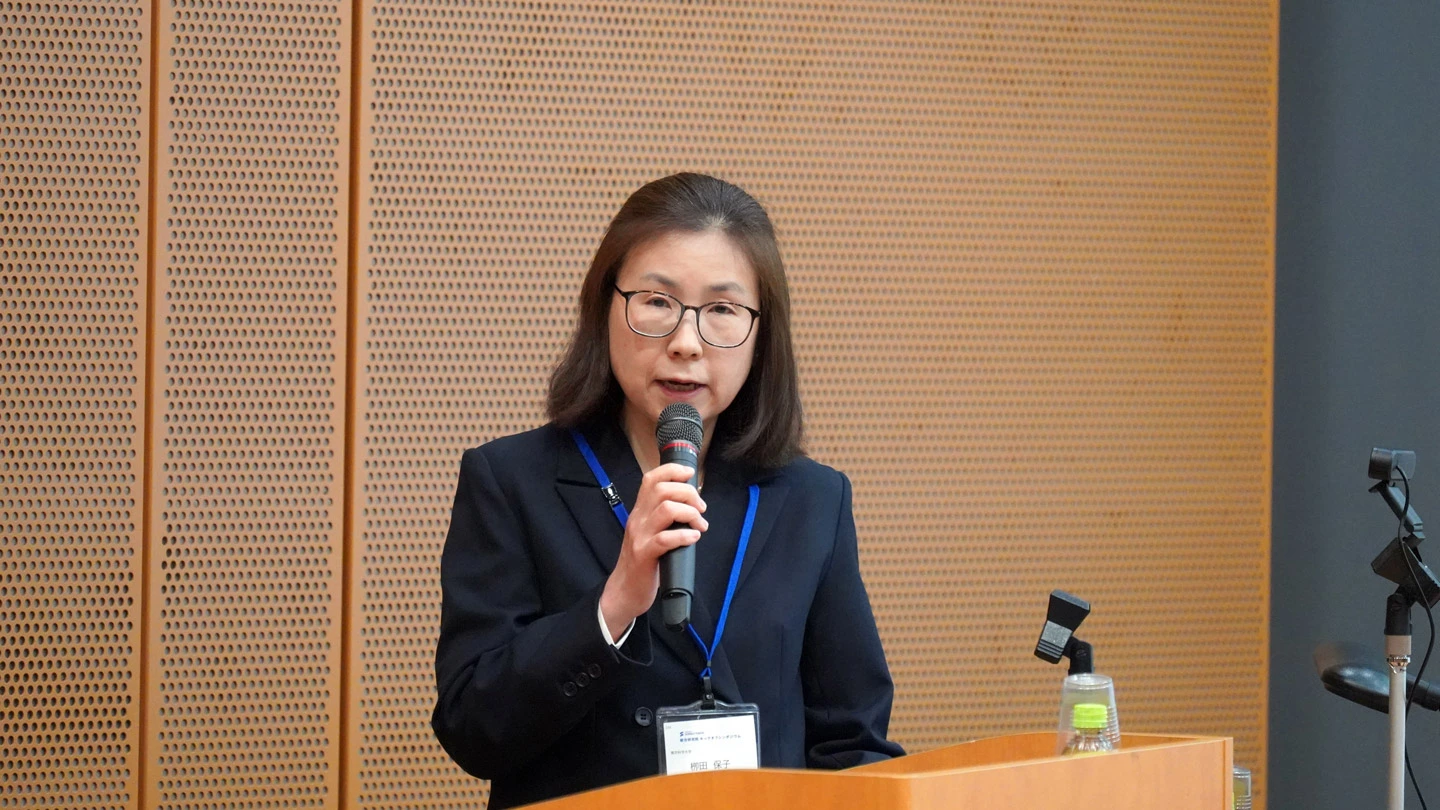
The three-hour symposium was a valuable opportunity to share expectations for the new possibilities created by the IIR's interdisciplinary research.
Related articles
Contact
Research Institute Administration Department
Kickoff Symposium Administration office